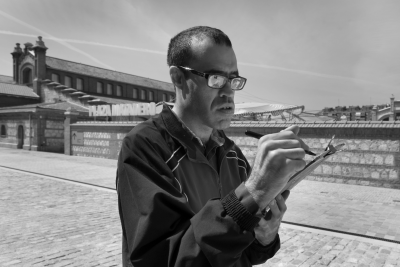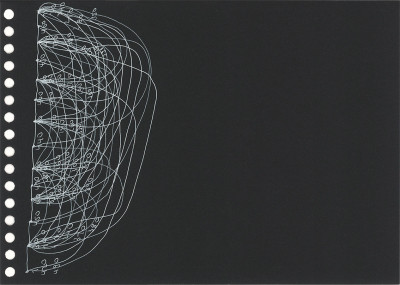Andrès Fernández
Emerging figure of Spanish art brut, Andrés Fernández joined the Madrid workshop Debajo del Sombrero in October 2009. Very shy, he only speaks when negations and acknowledgments are not enough - as a child, he would spend hours in atlases. The list - concise or exhaustive, even entirely inventive - and the plan, filled with directions and indications, are interconnected: together they ensure the symbolic deployment of a deeply intimate everyday life. Fernández participated in the Berlin Biennale between 2019 and 2020, and in the Shanghai Biennale in 2021. He has participated in group exhibitions at the Museum of Contemporary Art of Castilla y León (MUSAC), Museum of Contemporary Art of Barcelona (MACBA), and his work is part of the collections of the Dos de Mayo Art Center (CA2M).
Andrés Fernández’s works express a keen attention to cartography and language, two ways in which we, as humans, shape and represent the world. These two modes of our sense-making often occupy the two sides of Fernández’s paper sheet, which is mostly black. When that’s not the case, the verso bears the highly descriptive title of the recto. There is no horror vacui in his work; instead, there is a careful use of ink (mostly white, sometimes gold on black paper sheet, sometimes colored on white paper) that either transforms the nearly sideral void of the paper into an active element of the composition or covers it with a desire for precision, even exhaustivity. For example, the list titled ‘Formas de salidas’ includes 101 entries spread across the entire page; on the verso, a map.
This mapping of spaces, whether real or imagined, leads to areas covered with arrows indicating all directions simultaneously, like whimsical safety plans. Here, there are distorted depths accompanied by scenarios; there, overarching views of cities as seen through infrared glasses. Elsewhere, Fernández surveys imagined topographies with a more serious, scientific attitude. One of them, as the list with the 101 entries, aims to embrace everything with a stroke of the pen, pre-life and the world being separated by the ‘birth tunnel.’
Ultimately, apart from schematically-drawn silhouettes with prosaic captions like ‘The girl eats an apple,’ Fernández constructs alternative spaces through form and word. Sometimes, he places objects on the page, cataloging them like an index: spread out, flat, almost literally placed on the paper sheet. These forms, characteristic of Fernández’s approach, thereby act as living words.



